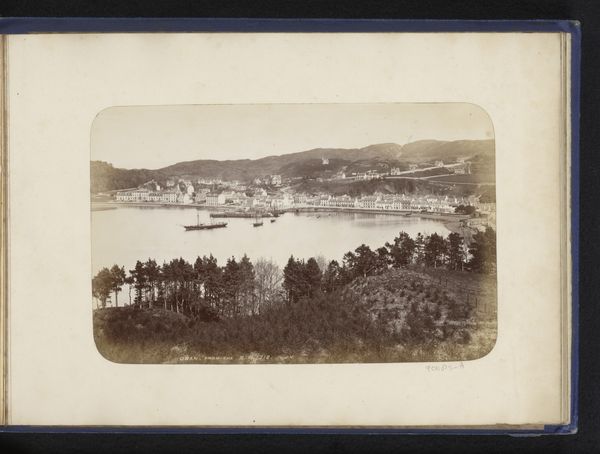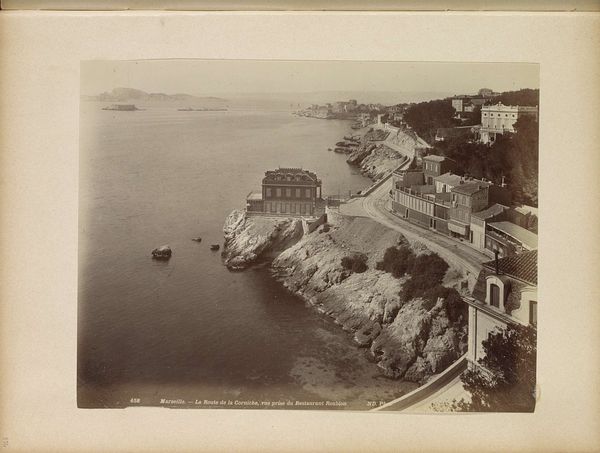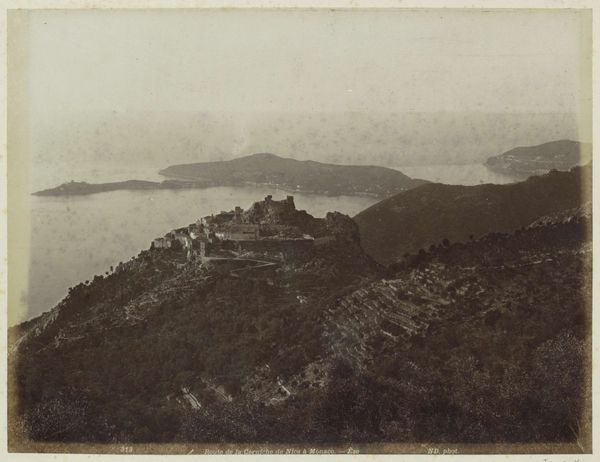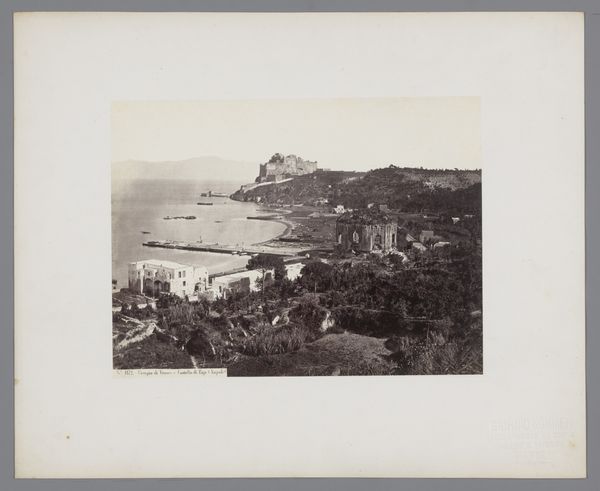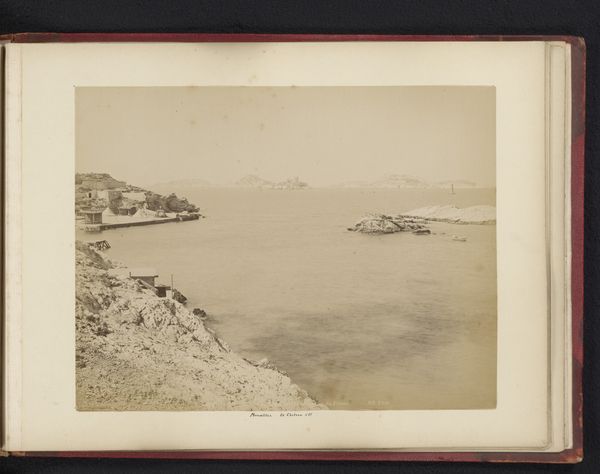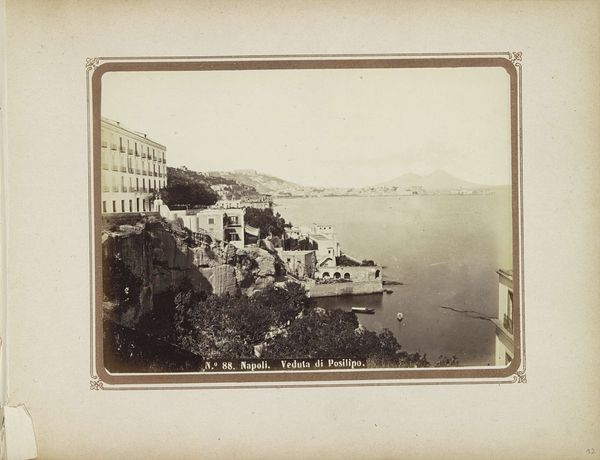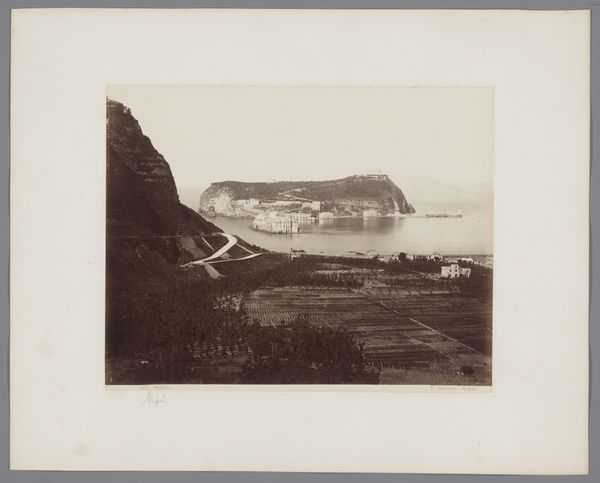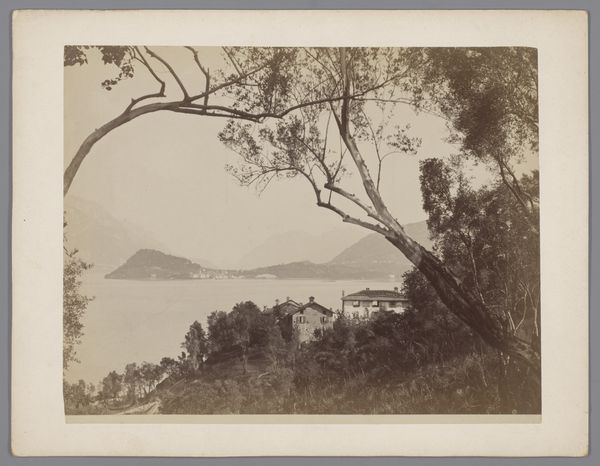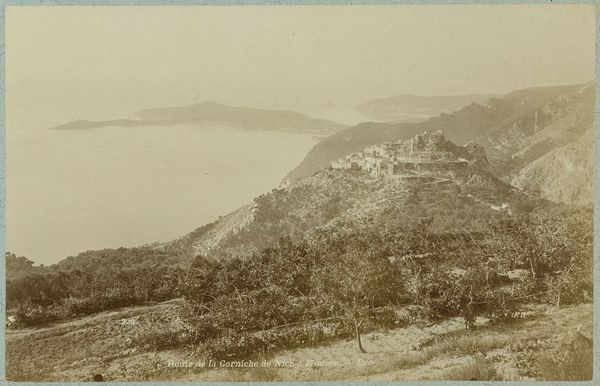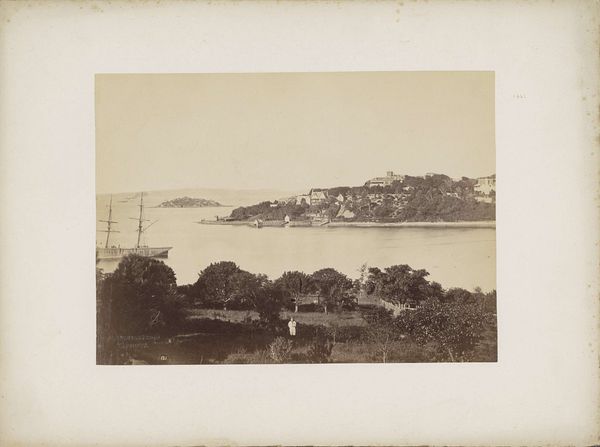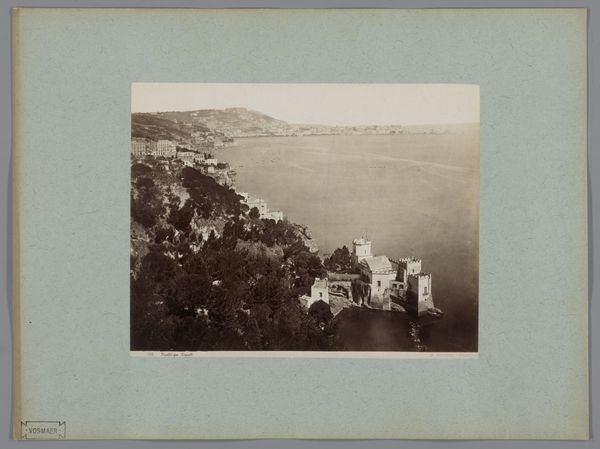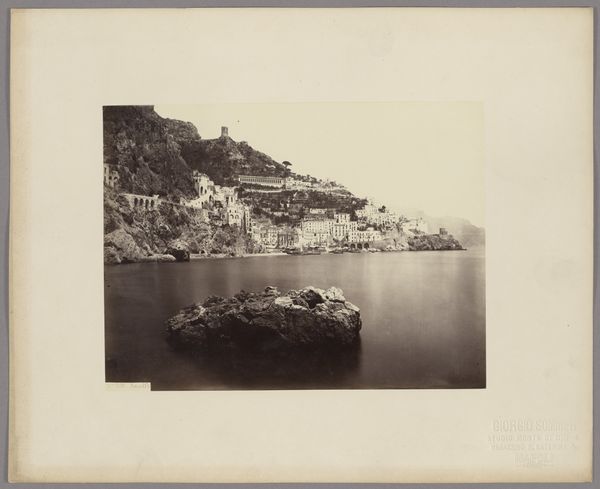
Copyright: Public domain
Curator: Allow me to introduce Roberto Rive’s 1860 albumen print, "View of the island of Ischia with the Castello Aragonese, Napoli," currently residing at the Rijksmuseum. The print is elegantly mounted on card stock. Editor: Immediately, the photograph gives off an aura of serenity, doesn't it? The tonal range, while limited, creates this soft, almost ethereal feeling, with the strong, oblique composition drawing my eye directly toward the fortified island in the distance. Curator: Yes, the balance is deliberate, a tripartite structure effectively separating the terrestrial foreground, aquatic middle ground and aerial, cloudy background. What I find compelling is how Rive guides the viewer using a fairly rigid set of compositional strategies. Note how the lines converge around the island complex. Editor: Focusing on the material aspect, albumen printing required a sophisticated mastery of chemistry and light, a meticulous craft demanding considerable labour, especially in its early adoption and popularization during that era. Each print is a testament to human skill, with paper and emulsions that, frankly, still look amazing nearly two centuries on. The fact that it looks so modern speaks to that quality. Curator: True, and that technical proficiency highlights the image’s inherent aesthetic value. The subtle gradations, the delicate interplay of light and shadow—these aspects reveal the photographer's acute understanding of the medium's capacity for conveying a sense of atmosphere. Editor: But wasn't the intention of that sort of topographical photograph as much documentary as it was artistic? Rive, and others of the time, had a market for these sorts of views amongst tourists. We can consider how the Castello, imposing though it may seem, became a commercial product as much as an inspiring sight. Curator: Possibly. However, I would also suggest that the strategic arrangement of elements—the dramatic sky, the reflective water—transcends mere documentation. These choices elevate the photograph to something greater; something that approaches high art through rigorous visual engagement. Editor: I concede there's definitely an aesthetic ambition here, though it doesn't distract from acknowledging that the photograph is embedded within its specific cultural moment of colonial expansion and trade of beautiful places like these. Still, what an engaging visual artifact it is, capturing a pivotal period. Curator: Agreed, this photograph provides an intriguing case study for the intersection of aesthetic intent and industrial photographic processes, offering us a unique vista to appreciate.
Comments
No comments
Be the first to comment and join the conversation on the ultimate creative platform.
